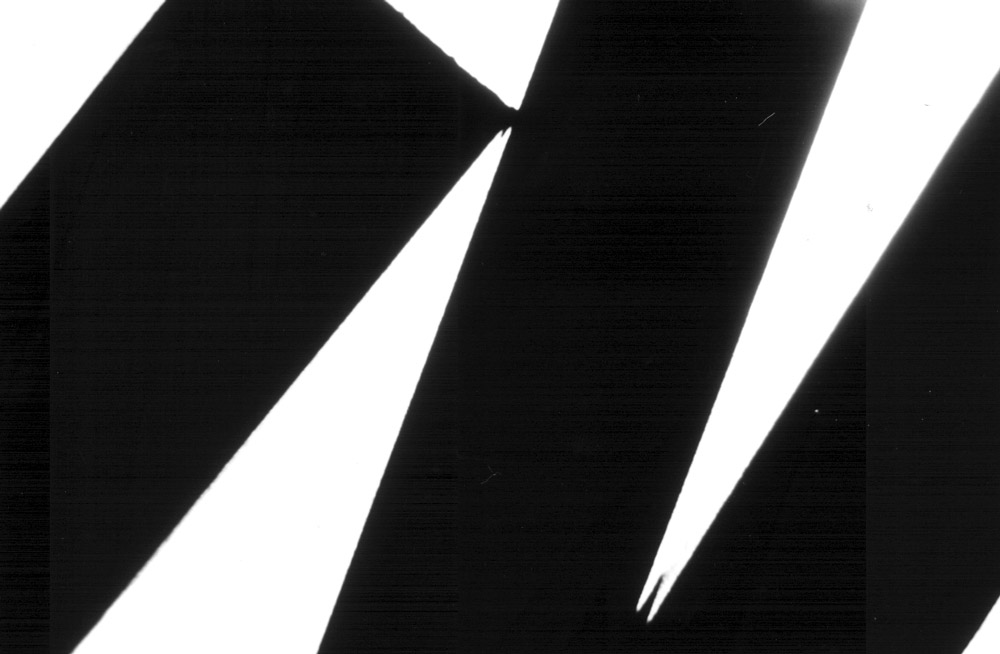Focus Part 1
70 mins
The material basis of the cinema-machine: the film strip, the photochemical emulsion, the mechanics of sliding of the camera and the projection; the perceptual transformation from still image into cinematographic movement. A micro-history of cinema as an ironic and affectionate tribute to the work of the historical names of Light Cone.
F.R.
BUY TICKET
Light Cone 40th Anniversary
Part 1
70 mins
The material basis of the cinema-machine: the film strip, the photochemical emulsion, the mechanics of sliding of the camera and the projection; the perceptual transformation from still image into cinematographic movement. A micro-history of cinema as an ironic and affectionate tribute to the work of the historical names of Light Cone.
F.R.
BUY TICKET
Sat 28 May
20:00 - 21:30 / ACUD KINOGiovanni Martedì
FILM SANS CAMÉRA F.S.C. N° 1
France, 1974, 11' 00, 16mm, sound

Film Sans Caméra is a single sequence of images (120 metres long), produced by direct taping on a transparent support of various adhesives: this mono-image becomes a film through its projection. "Like Stan Brakhage, who glues butterfly wings or flower petals (Mothlight) upon the film, or letting them moulding freezing them then with a lacquer, also Martedi glues various pieces of colored adhesive tapes in his FILM SANS CAMÉRA F.S.C. N° 1.” (Dominique Noguez)
Jules Engel
TRAIN LANDSCAPE
USA, 1974,1975, 4' 00, 16mm, sound

An abstract evocation of the landscapes that flash by our eyes when we travel by train.
Rose Lowder
ROULEMENT, ROUERIE, AUBAGE
France,1978, 15' 00, 16mm, silent

Roulement = rotation of the wheel reflecting the camera's mechanisms. Rouerie = wiliness, the focusing of the image in relation to the frame. Aubage = the functioning of the paddle wheel as a visual unit.
Roulement, Rouerie, Aubage takes two paddle wheels on the Sorgue as its subject. Structured in the camera without any editing, the film makes use of a series of cross-references that are suspended between two operating mechanisms: elements belonging to the rotating wheels, and selected filming procedures which accentuate visual features. On the screen the image remains continually on a borderline between the graphic or photographic characteristics and the representation, thus allowing one to shift regularly between two ways of seeing.
Jean-Michel Bouhours
CHRONOMA
France, 1977, 23' 00, 16mm, silent

Chronoma was conceived as a follow-up to Rythmes 76: its composition is inspired by the repetitive processes of Steve Reich's music, with their gradual progression.
This time, we have a sequence of photographs taken with a motorised camera (a proto movie camera) in a circular movement around a high-voltage electric tower in Northern Paris. The initial image in itself draws a series of lines which intersect to form angles.
The sequence recomposes a clumsy but deliberate moving image effect, in the same vein as precursors of cinema as Etienne-Jules Marey's chronophotographie. The cinematic device recreates an almost fluid moving image from the photographic images, but this moving image is "truffled" with colour planes on a black background, kind of negatives of the photographic images, which disturb and create violent effects of light contrasts in fast rhythms. Similar to the famous flicker effect experienced by Brion Gysin's closed eyes with Ian Sommerville through the Dream Machine in 1962 but radicalised in cinema since Gil J Wolman, Peter Kubelka or Paul Sharits and from which subjects with epileptic seizures (neuronal rush) had to protect themselves. Chronoma, concerns itself with the question of grafting a moving image onto this "flicker", of synthesising the continuous and discontinuous, the peaceful and the violent in order to achieve an increased awareness of visual phenomena.
JMB
Yann Beauvais
R
France, 1976, 3' 00, 16mm, silent

R is a very simple film, flickering and panning which in its silence induces a fugue of rhythms. The centre part of the film is a transcription of one of J.S. Bach ’s Invention.
Patrice Kirchhofer
SENSITOMÉTRIE III
France,1975, 12' 15, 16mm, sound

The large visual elaborations of Kirchhofer mean that the most simple devices and childish in cinema archeology, Thaumatrope the Praxinoscope, are optical toys. This fundamental investigation of the batch becomes particularly clear in Sensitométrie III (Sensitometry III), where the work on the range is very pure because it is accentuated by the open opposition between positive and negative. The difference being that, whereas other devices seek forms of regularity and stability to swallow motionless in the mobile, Kirchhofer instead explores all possible rhythms, so as to enhance irregularity, difference, and discontinuousness. The parade always comes up against the still image, continuity serves to monumentalize. Meanwhile, the optical illusion is stripped, and the beauties of the irregular explode. (Nicole Brenez - Portrait Arte - May 2006III).
SCHEDULE 2022
Fri 27
18:30 / ACUD BACKYARD
Festival Opening
19.30 / ACUD KINO
Selection #1
In and Out Window
22:30 / ACUD STUDIO
Film Performance
Gaelle Rouard
Sat 28
11:00 / ACUD STUDIO
Workshop
Experimental Film Archive
13:00 / ACUD BACKYARD
Occulto presents
Publishing Matters
15:00 / ACUD STUDIO
Selection #2
Body Configurations
17:00 / ACUD STUDIO
Selection #3
Shipwrecks
20:00 / ACUD KINO
Focus
Light Cone 40th Anniversary
Part1
22:00 / ACUD KINO
Focus
Emmanuel Lefrant
Sun 29
13:00 / ACUD BACKYARD
Occulto presents
Publishing Matters
18:00 / ACUD KINO
Selection #4
Sensitive Remains
20:30 / ACUD KINO
Focus
Light Cone 40th Anniversary
Part2
22:30 / ACUD STUDIO
Film Performance
Tomonari Nishikawa